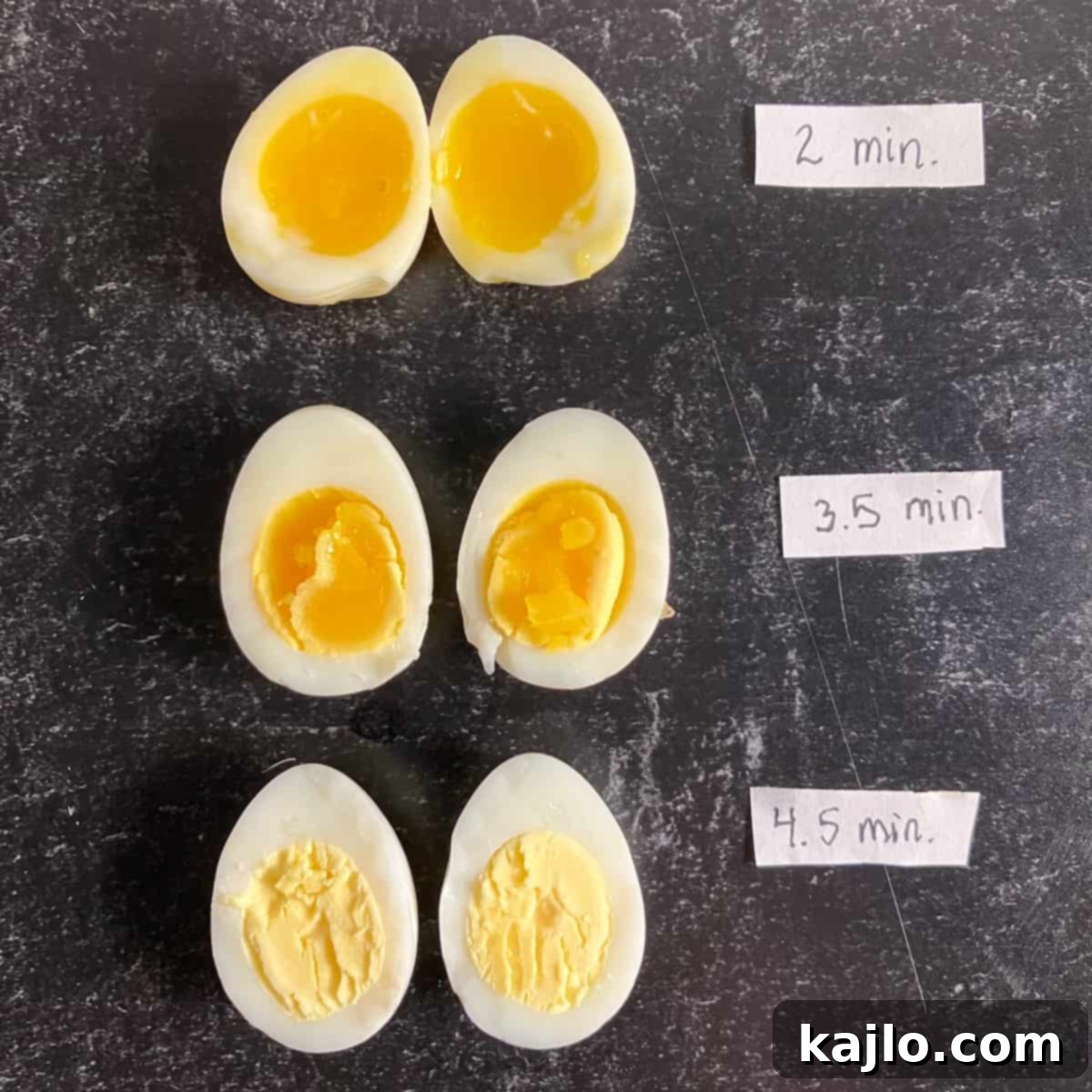Mastering Quail Eggs: Your Ultimate Guide to Cooking Them Perfectly Every Time
Quail eggs are a delightful delicacy, smaller than chicken eggs but packed with flavor and nutrition. Whether you’re aiming for perfectly hard-boiled quail eggs, a runny soft yolk, or exploring other delicious preparations like fried, poached, or scrambled, this comprehensive guide has you covered. You’ll also discover how to easily cook them in an air fryer, making meal prep a breeze. Get ready to elevate your breakfast or snack game with these tiny, incredible eggs!
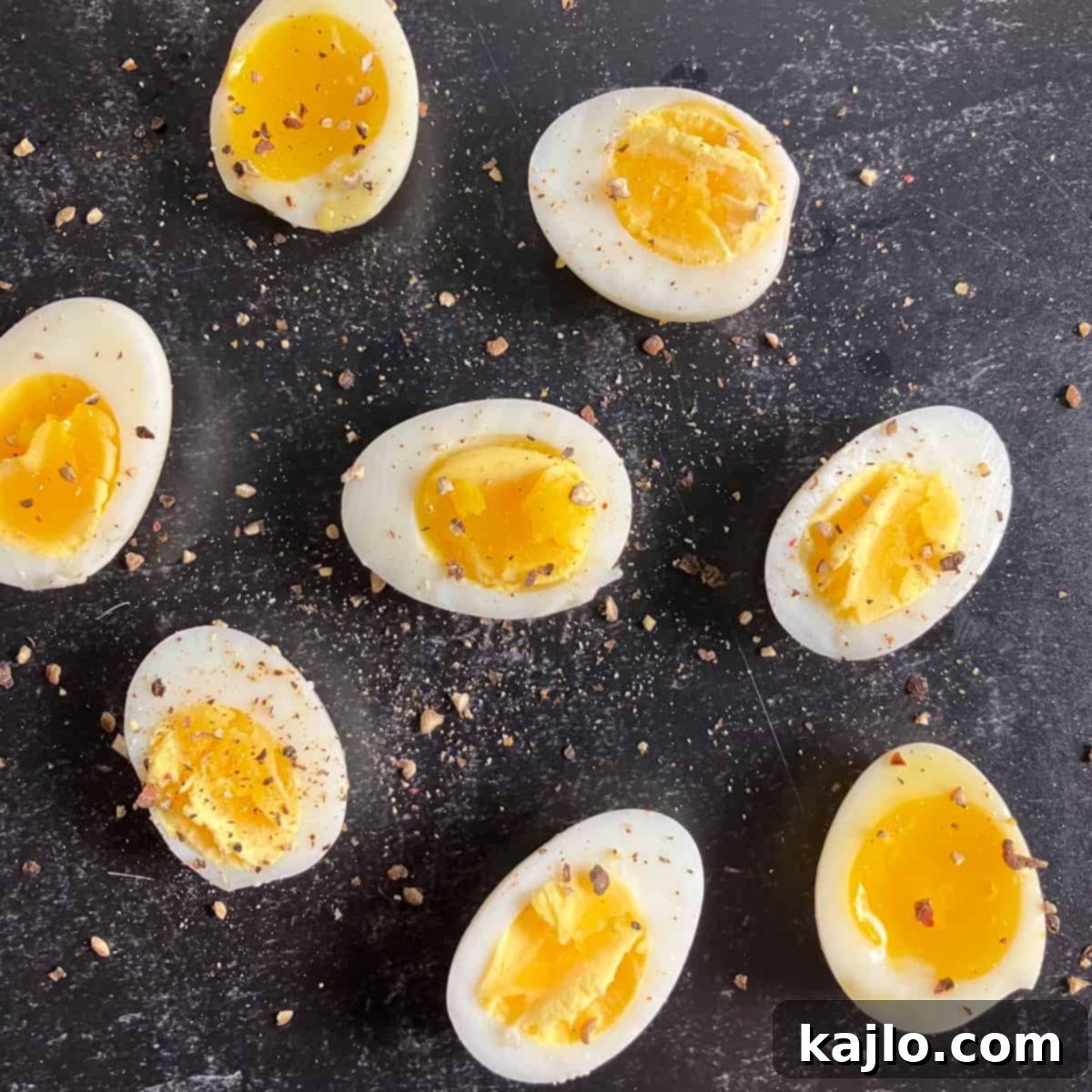
Cooking quail eggs is surprisingly easy and often faster than preparing chicken eggs. Their delicate flavor and creamy texture make them a gourmet addition to salads, appetizers, or simply enjoyed on their own. If you appreciate the versatility of chicken eggs, you’ll be amazed at how quickly you can achieve various culinary outcomes with quail eggs.
How Long to Boil Quail Eggs (And 4 More Ways to Cook Them!)
By Summer Yule
Discover the ideal boiling times for quail eggs and explore diverse cooking methods.
Pin Recipe
5 mins
5 mins
Breakfast, Snack
Japanese
1
15 kcal
Ingredients
- 4 quail eggs
- ⅛ teaspoon baking soda
- Ice water
Instructions for Boiled Quail Eggs
- Combine cold water and ⅛ teaspoon of baking soda in a pot. Bring the water to a full boil over medium heat. The baking soda helps make the quail eggs easier to peel.
- Once the water is boiling, carefully place the raw quail eggs into the pot, ensuring they are fully submerged. Avoid overcrowding the pot. Set your timer according to your desired doneness:
- Soft-boiled quail eggs: 2 minutes (for a runny yolk)
- Medium-boiled quail eggs: 3.5 minutes (for a jammy yolk)
- Hard-boiled quail eggs: 4.5 minutes (for a firm yolk)
- As soon as the timer goes off, promptly remove the quail eggs from the hot water using a slotted spoon or strainer. Immediately transfer them to a bowl of ice water to halt the cooking process and cool them down. Once cooled, peel and enjoy!
Instructions for Other Cooking Methods
- Fried Quail Eggs: Preheat a cast-iron skillet over medium-low heat for 3-5 minutes. Add ½ tablespoon of butter and swirl to coat the pan. Gently crack 4 quail eggs into the skillet and cook for 30-60 seconds over medium-low heat, until the whites are set and the yolk is still runny.
- Poached Quail Eggs: Bring water to a gentle simmer with a splash of vinegar. Crack each quail egg into a separate small bowl. Create a gentle whirlpool in the simmering water with a spoon, then carefully slide the eggs one by one into the center. Poach for 2 minutes for a runny yolk or 3-4 minutes for a firmer yolk. Remove with a slotted spoon and drain on paper towels.
- Scrambled Quail Eggs: Heat a skillet with ½ tablespoon of butter over medium heat. Whisk 4 quail eggs in a bowl. Pour into the hot skillet and scramble for about 2 minutes, stirring frequently, until cooked to your preference.
- Air Fryer Quail Eggs:
- Hard-boiled: Place quail eggs (no water) in the air fryer basket. Air fry for 5-6 minutes at 270°F (132°C). Immediately plunge into ice water to stop cooking.
- Fried: Spray a mini muffin tin with cooking spray. Crack one quail egg into each compartment. Air fry at 375°F (190°C) for 3-5 minutes, or until the whites are set. (Use the top rack for air fryer ovens.)
- Scrambled: Lightly mist a mini pie tin with cooking spray. Whisk 4 quail eggs and pour into the tin. Air fry at 375°F (190°C) for 3 minutes, then whisk the eggs and air fry for another 1-2 minutes, mashing/whisking again for desired consistency.
Equipment
- Pot
- Strainer or Slotted Spoon
Notes
Expert Tips from Dietitian Summer Yule
This is a level 1 recipe (may help support fat loss). Are quail eggs healthy? What are the benefits of quail eggs? Quail eggs are indeed a nutritious food choice, fitting well into diets aimed at weight loss and healthy weight maintenance.
While the nutrient profile of quail eggs is similar to chicken eggs, they possess some distinct qualities. Like chicken eggs, they offer a good source of protein, essential vitamins (suchably vitamin B12, riboflavin, and choline), and vital minerals (including iron and selenium). Notably, they tend to be lower in cholesterol than chicken eggs, primarily due to their smaller size.
Optimal health always considers individual dietary needs and a holistic approach to balanced nutrition. For most individuals, incorporating quail eggs into their diet is an excellent choice.
Nutrition information provided is for one boiled quail egg.
nutrition info disclaimer
All recipes on this website may or may not be appropriate for you, depending on your medical needs and personal preferences. Consult with a registered dietitian or your physician if you need help determining the dietary pattern that may be best for you.
The nutrition information is an estimate provided as a courtesy. It will differ depending on the specific brands and ingredients that you use. Calorie information on food labels may be inaccurate, so please don’t sweat the numbers too much.
“To taste” means to your preferences, which may have to be visual to follow food safety rules. Please don’t eat undercooked food.
Nutrition Facts (Per 1 Quail Egg)
Protein: 1 g
Fat: 1 g
Sodium: 10 mg
Potassium: 10 mg
Iron: 2 % DV
air fryer quail eggs, boiling quail eggs, fried quail eggs, hard boiled quail eggs, how long to boil quail eggs, how to boil quail eggs, how to cook quail eggs, quail egg recipe, quail eggs recipes, soft boiled quail eggs
🥚 Boiling Quail Eggs: The Detailed Method
For precision and to prevent overcooking, it is generally recommended to introduce quail eggs to water once it has reached a rolling boil. Adding them to cold water and bringing it to a boil can lead to inconsistency in doneness and often results in overcooked yolks or rubbery whites due to the extended cooking time. Below are the specific timings and a detailed, step-by-step guide for perfectly boiled quail eggs.

Begin by filling a medium-sized pot with cold water. Stir in 1/8 teaspoon of baking soda. This small addition is a fantastic trick that helps in making the quail eggs significantly easier to peel once cooked. Place the pot over medium-high heat and bring the water to a vigorous boil. This ensures a consistent starting temperature for cooking.
Once the water is actively boiling, gently lower the raw quail eggs into the pot using a slotted spoon. Be careful not to drop them, as their delicate shells can crack easily. Ensure the eggs are fully submerged in the boiling water. Immediately set your timer for the desired cooking level:
- How long to soft boil quail eggs (jammy eggs): 2 minutes – for a luscious, runny yolk that’s perfect for toast or salads.
- Time to boil quail eggs for medium boil: 3.5 minutes – for a jammy, custardy yolk that’s still soft but holds its shape.
- How long to hard boil quail eggs: 4.5 minutes – for a firm, fully set yolk, ideal for pickling or slicing.
As soon as the timer signals the end of the cooking time, swiftly remove the quail eggs from the hot water. Transfer them without delay into a bowl filled with ice water. This crucial step immediately stops the cooking process, preventing overcooking and aiding in easier peeling. Allow them to cool completely in the ice bath for several minutes. Once cooled, peel away the shells and savor your perfectly cooked quail eggs!
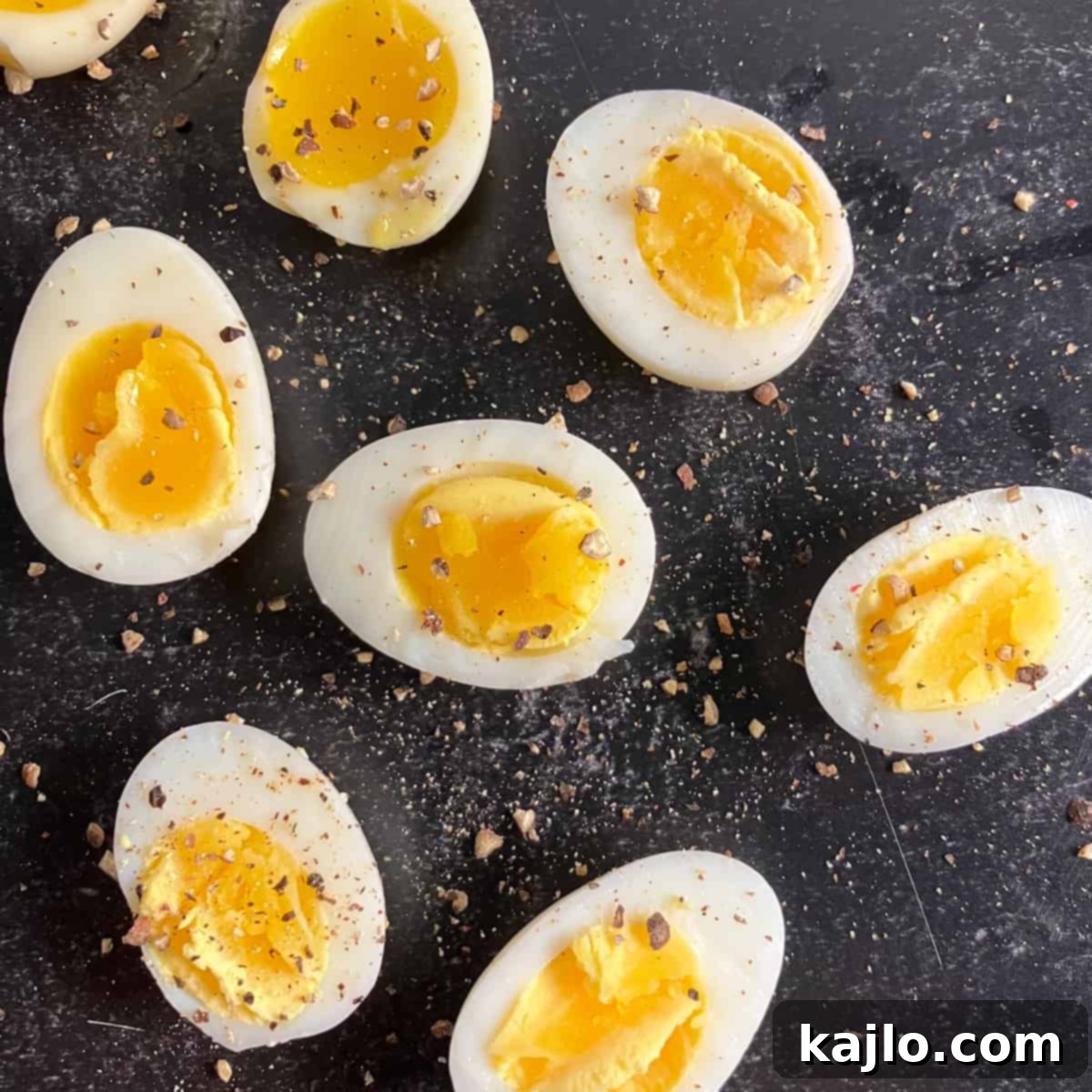
How long to boil quail eggs for pickling?
For pickling, the ideal doneness for quail eggs is hard-boiled. This ensures they can absorb the pickling liquid effectively and maintain their texture. Most recipes recommend boiling quail eggs for 4-5 minutes before proceeding with the pickling process. This results in a fully set yolk, which is preferred for the distinct taste and longevity of pickled eggs. Using soft or medium-boiled eggs for pickling is less common and may alter the final texture and shelf life.
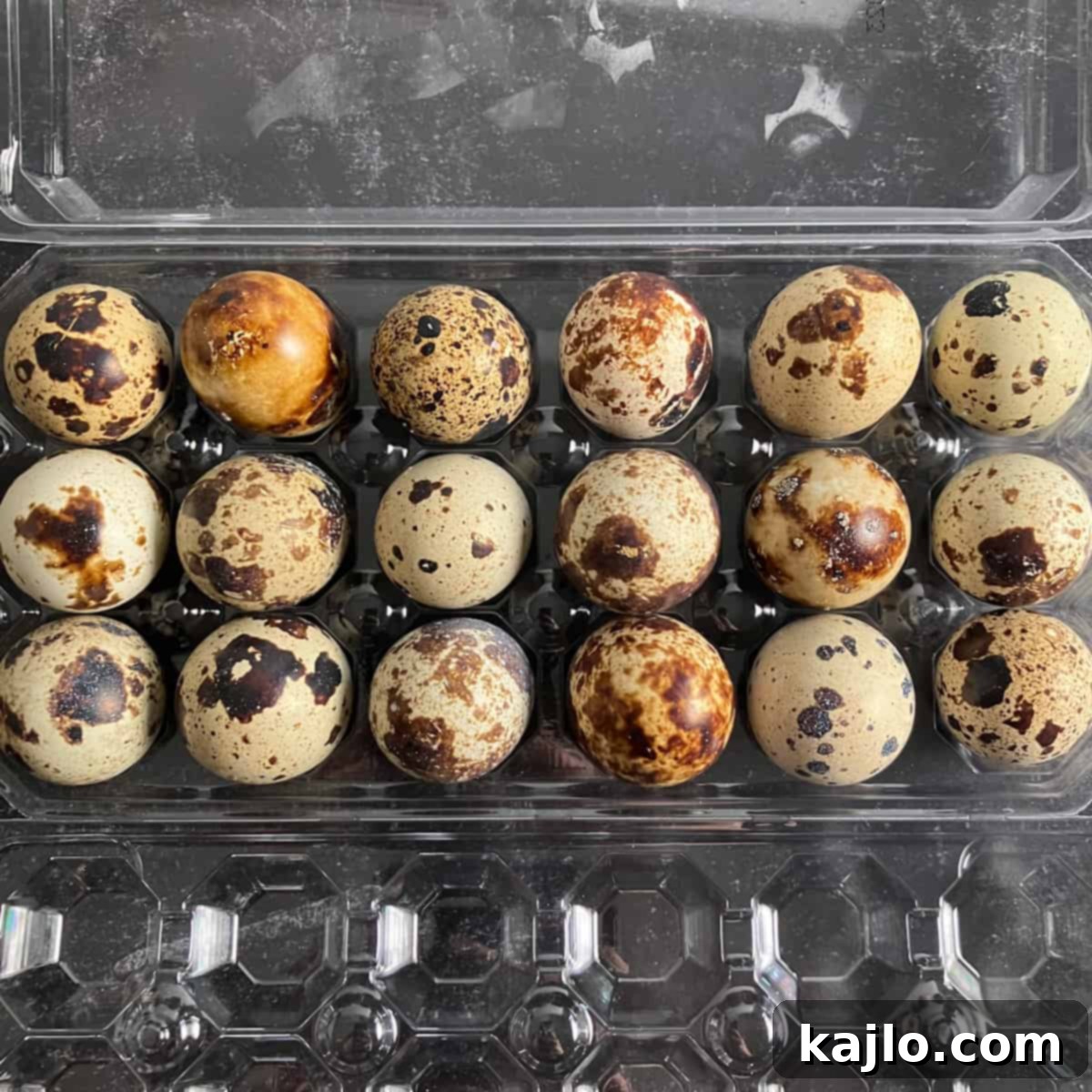
➕ Tips for Easy Peeling: How to Boil Quail Eggs That Are Easy to Peel
Peeling quail eggs can sometimes be a test of patience due to their delicate shells and often stubborn membranes. To significantly ease this process, consider these expert tips:
- Baking Soda or Vinegar: As mentioned in the recipe, adding 1/8 teaspoon of baking soda or a splash of white vinegar to the boiling water can work wonders. Both agents alter the pH level of the water, which helps to separate the egg white from the inner shell membrane, making the shell easier to detach.
- Older Eggs: Fresh eggs are notoriously difficult to peel because their membranes adhere more strongly to the albumen. If possible, use eggs that are a few days to a week old. They will naturally peel more easily.
- Immediate Ice Bath: The rapid cooling in ice water immediately after boiling causes the egg white to contract, pulling it away from the shell membrane. This shock helps prevent the membrane from sticking to the cooked egg.
- Peel Under Running Water: Once cooled, crack the egg gently all around. Then, peel the egg under cool running water. The water helps to get under the membrane and wash away small shell fragments, preventing them from sticking to the egg white.
- Gentle Rolling: After a slight crack, gently roll the egg on a flat surface to create a network of fine cracks. This can make the peeling process smoother, as the shell comes off in larger pieces.
Cracking Quail Eggs
While quail eggs are smaller, their shells are proportionally thicker and tougher than chicken eggs. This means they require a slightly firmer tap to crack, but the method remains the same. You can crack quail eggs by tapping them gently but firmly on a flat surface, such as a counter, or by using the side of a spoon. Be mindful of their size when doing so to avoid breaking the yolk if you’re aiming for fried or poached preparations.
Peeling Boiled Quail Eggs
Despite their smaller stature, the membrane beneath a quail egg’s shell is quite robust, often thicker than that of a chicken egg. This characteristic can make peeling challenging if not approached correctly. By following the tips mentioned above—using slightly older eggs, adding baking soda or vinegar to the boiling water, and an immediate ice bath—you can significantly improve the peeling experience. Peeling under cool running water is particularly effective for separating the shell from the delicate albumen without damaging the egg.
🤔 Storage: How Long Do Boiled Quail Eggs Last?
Proper storage is essential to maintain the freshness and safety of your cooked quail eggs. According to guidelines from the USDA, hard-boiled eggs, including quail eggs, can be safely stored in the refrigerator for up to one week. You have the flexibility to store them either in their shells or peeled, though storing them in their shells can sometimes help to retain moisture and freshness for a bit longer.
When storing, place them in an airtight container to protect them from absorbing odors from other foods in the refrigerator and to prevent them from drying out. It’s crucial not to leave cooked quail eggs at room temperature for more than 1-2 hours, as this can promote bacterial growth and increase the risk of foodborne illness. Always refrigerate promptly.
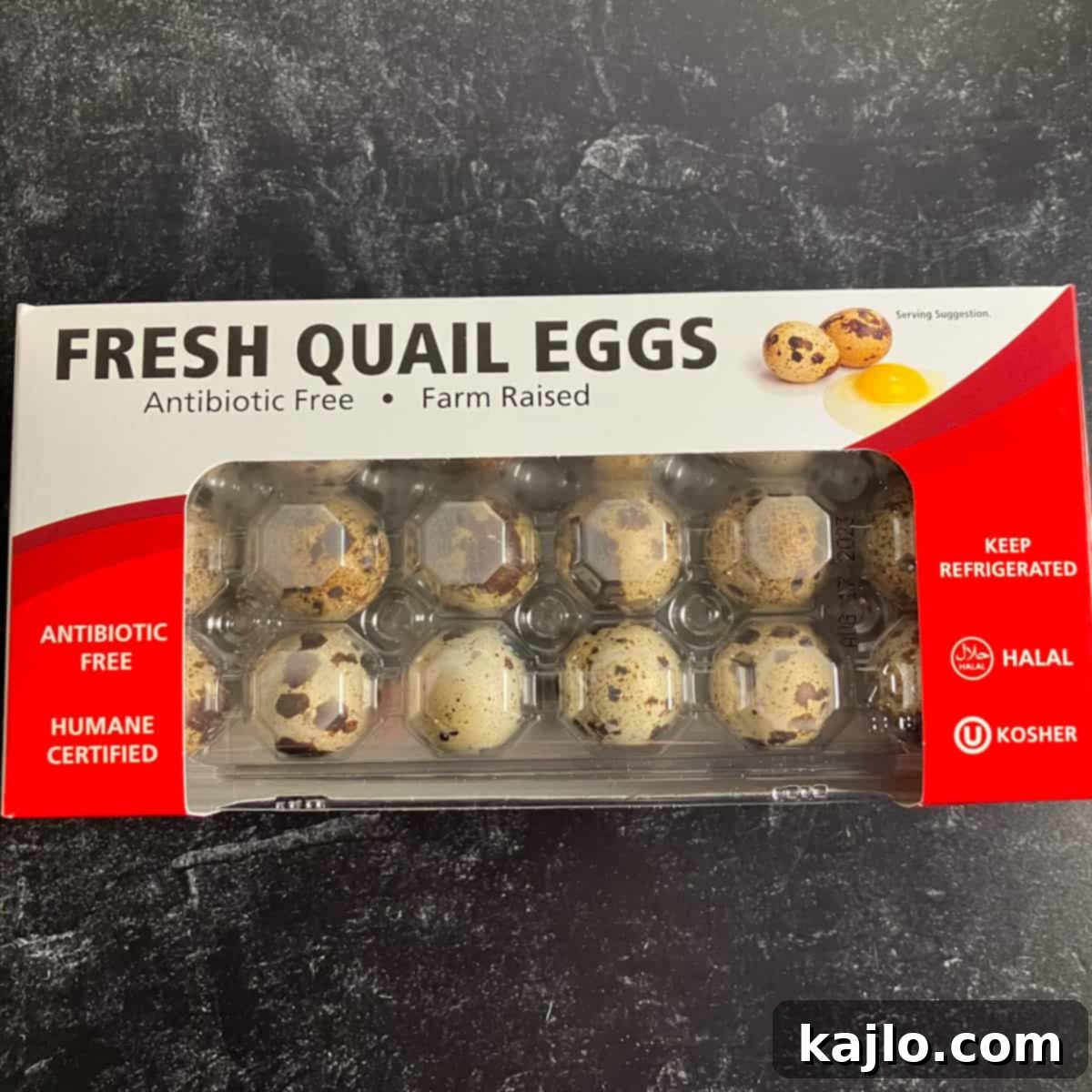
Frequently Asked Questions About Quail Eggs
What do quail eggs taste like?
When comparing quail eggs vs. chicken eggs, many wonder if there’s a significant difference in flavor. Quail eggs offer a distinct taste profile: they are often described as having a creamier and more delicate flavor than chicken eggs. They tend to be slightly richer and less “eggy,” with a subtle, earthy undertone. This makes them a favored choice for dishes where a more refined egg flavor is desired, adding a touch of gourmet elegance.
Do you wash quail eggs before boiling?
No, the USDA explicitly advises against washing eggs, including quail eggs, before boiling or any other cooking method. The reason is that eggshells are porous and covered with a natural protective coating called the bloom or cuticle. Washing eggs can remove this protective layer, making the shell more susceptible to bacteria penetrating the egg’s interior, potentially increasing the risk of contamination and food poisoning. If your eggs appear visibly dirty, you can gently wipe them with a dry cloth, but avoid using water.
Can you eat raw quail eggs?
Similar to chicken eggs, the USDA does not recommend consuming raw shell eggs, which includes quail eggs, duck eggs, or any other type of poultry egg. Eating raw or undercooked eggs carries an increased risk of contracting Salmonella, a type of bacteria that can cause foodborne illness. To ensure food safety, always cook quail eggs thoroughly until the whites and yolks are firm.
What is the best way to eat quail eggs?
The “best” way to enjoy quail eggs is largely a matter of personal preference, as they are incredibly versatile. Many find them particularly appealing when boiled, especially soft-boiled or medium-boiled, as this method highlights their delicate texture and allows their beautiful speckled shells to be appreciated. However, their small size and rich flavor make them excellent in various preparations. They can be served as appetizers, added to salads, used as a garnish for soups or noodle dishes, or even featured in more elaborate culinary creations. Ultimately, the best way to prepare quail eggs is likely the same way you prefer your chicken eggs, simply on a smaller, more refined scale.
Where to buy quail eggs?
Quail eggs are becoming increasingly accessible, though they might not be found in every standard grocery store. You can often find them at larger warehouse clubs like Costco, specialty food stores, or international/East Asian food markets. These stores typically stock them due to their popularity in various cuisines. The price for a package of 36 quail eggs can vary, but at some retailers, they might be around $8.99. Occasionally, health food stores or gourmet markets like Trader Joe’s might also carry them, especially in regions with diverse culinary offerings. Checking with your local butcher or farmer’s market is another excellent option for fresh, locally sourced quail eggs.
How many quail eggs equal one chicken egg?
Due to their significant size difference, it takes approximately 3-4 quail eggs to equal the volume of one standard large chicken egg. In terms of caloric content, roughly 4-5 quail eggs provide the same number of calories as one large chicken egg. This comparison is helpful when substituting quail eggs in recipes designed for chicken eggs, ensuring you maintain the intended proportions and nutritional balance.
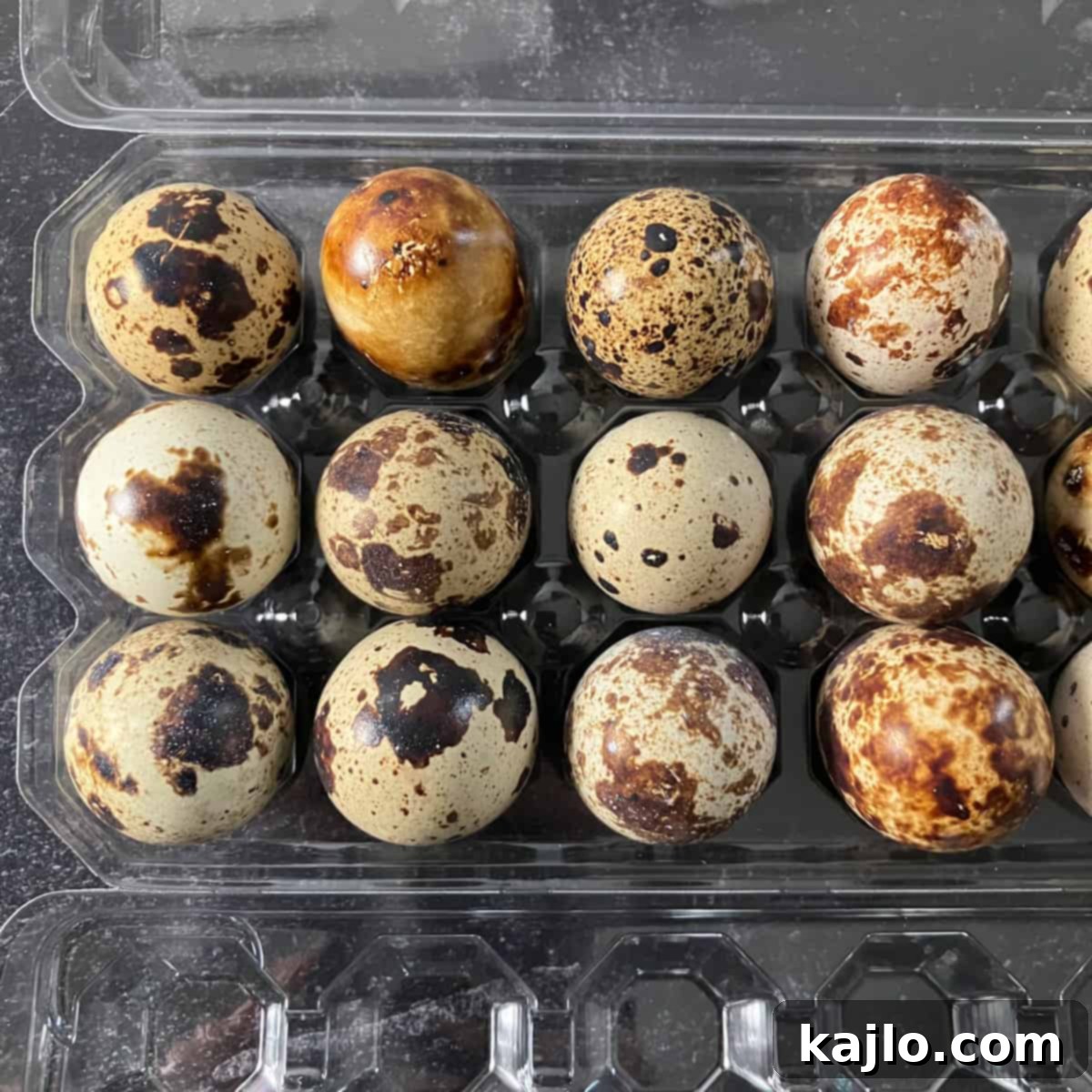
Boiled Quail Eggs: Nutritional Breakdown
One small quail egg is a powerhouse of nutrients, providing approximately 15 calories, 0 grams of carbohydrates (making them naturally zero net carbs), and 1 gram of protein. This makes quail eggs an excellent choice for those following low-carb, keto, or gluten-free diets. They are also a naturally vegetarian food source, offering essential macronutrients and micronutrients in a compact package.
Quail Eggs and Cholesterol
Each quail egg contains approximately 50 mg of cholesterol and virtually no saturated fat. In contemporary nutritional science, the emphasis for a heart-healthy diet that supports optimal blood cholesterol levels has shifted from dietary cholesterol to saturated and trans fats. Therefore, while quail eggs do contain cholesterol, their low saturated fat content makes them a good option for most healthy individuals when consumed as part of a balanced diet. Always consult with a healthcare professional or registered dietitian for personalized dietary advice, especially if you have specific health concerns.
👨🍳 Beyond Boiling: Creative Quail Egg Recipes
Now that you’ve mastered how to cook a quail egg through various methods, especially boiling, the culinary possibilities are endless! Quail eggs can be a delightful substitute for regular eggs in many dishes, adding a touch of elegance and a richer flavor. Consider using perfectly boiled quail eggs for enhancing your favorite ramen bowls, or incorporate them into delicious keto egg salad or keto deviled eggs for a bite-sized gourmet experience.
Another popular quail egg recipe is Kwek Kwek, a beloved Filipino street food. This dish features deep-fried quail eggs coated in a vibrant orange batter, offering a crispy exterior and a tender interior. It’s a fantastic way to enjoy quail eggs with a unique cultural twist.
Here are a few more delicious ways to get cooking with quail eggs, extending their use beyond simple boiling:
Crispy Fried Quail Eggs
Frying quail eggs is a quick and satisfying way to enjoy them, often much faster than preparing chicken eggs. The key is to manage the heat and timing for that perfect runny yolk and crispy edge.
To begin, preheat a well-seasoned cast iron skillet (or any non-stick skillet) over medium-low heat for about 3-5 minutes. This ensures even heating. Add approximately ½ tablespoon of butter (or your preferred cooking oil) and swirl it around the pan to create an even, non-stick surface. Crack 4 quail eggs directly into the skillet. Cook them over medium to medium-low heat. The small size of quail eggs means they cook very rapidly; it typically takes only 30-60 seconds to achieve beautifully fried quail eggs with a perfectly runny yolk and firm, set egg whites. Serve immediately with a sprinkle of salt and pepper, or on toast.
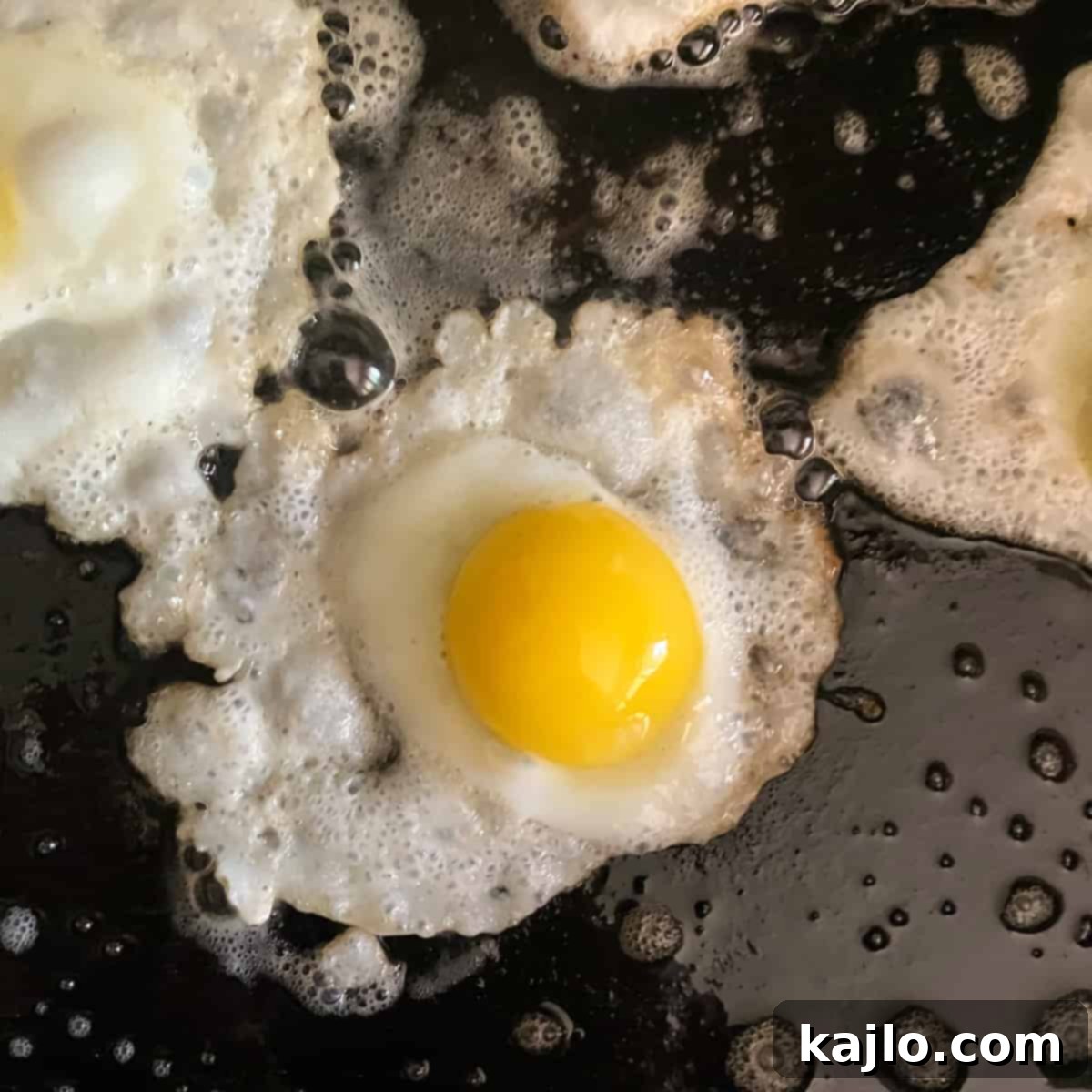
Delicate Poached Quail Eggs Recipe
Poached quail eggs are a delightful addition to brunches, salads, or as a sophisticated garnish. Their small size means they poach incredibly fast. Follow these simple steps for perfect poached quail eggs:
Fill a small saucepan with enough water to comfortably submerge the eggs, then bring it to a gentle simmer over medium heat. The water should have small bubbles, but not be rapidly boiling.
Add a generous splash of white vinegar or apple cider vinegar to the simmering water. The vinegar helps the egg whites coagulate quickly, allowing them to hold their shape better in the water.
Carefully crack each quail egg, one at a time, into separate small bowls or ramekins. This makes it easier to gently slide them into the water without breaking the yolk.
Using a spoon, stir the simmering water to create a gentle whirlpool. This motion helps to wrap the egg whites around the yolk, creating a neat, compact poached egg.
Carefully slide the quail eggs, one by one, into the center of the whirlpool. The swirling water will help shape the eggs as they cook.
Allow the eggs to poach for approximately 2 minutes for a beautifully runny yolk, or 3-4 minutes if you prefer a more set yolk. Keep an eye on them, as they cook very quickly.
Once cooked to your liking, remove the poached quail eggs from the water using a slotted spoon. Gently place them on a plate lined with paper towels to absorb any excess water, preventing your dish from becoming watery.
Season your freshly poached quail eggs with a pinch of salt and freshly ground black pepper, or any desired herbs and spices to complement your meal.
Serve poached quail eggs immediately as a standalone delicacy, nestled on a bed of greens, on crispy toast, as part of a vibrant salad, or as an elegant garnish for various main dishes.
Quick & Easy Scrambled Quail Eggs
Scrambled quail eggs offer a quick and delightful breakfast or snack option, retaining their delicate flavor. To prepare them, heat a skillet over medium heat and add about ½ tablespoon of butter (or oil). While the skillet is warming, whisk 4 quail eggs thoroughly in a bowl. Pour the whisked eggs into the hot skillet and gently scramble them for approximately 2 minutes, stirring frequently with a spatula until they reach your desired consistency. Their small size means they cook very quickly, resulting in fluffy and flavorful scrambled eggs in no time.
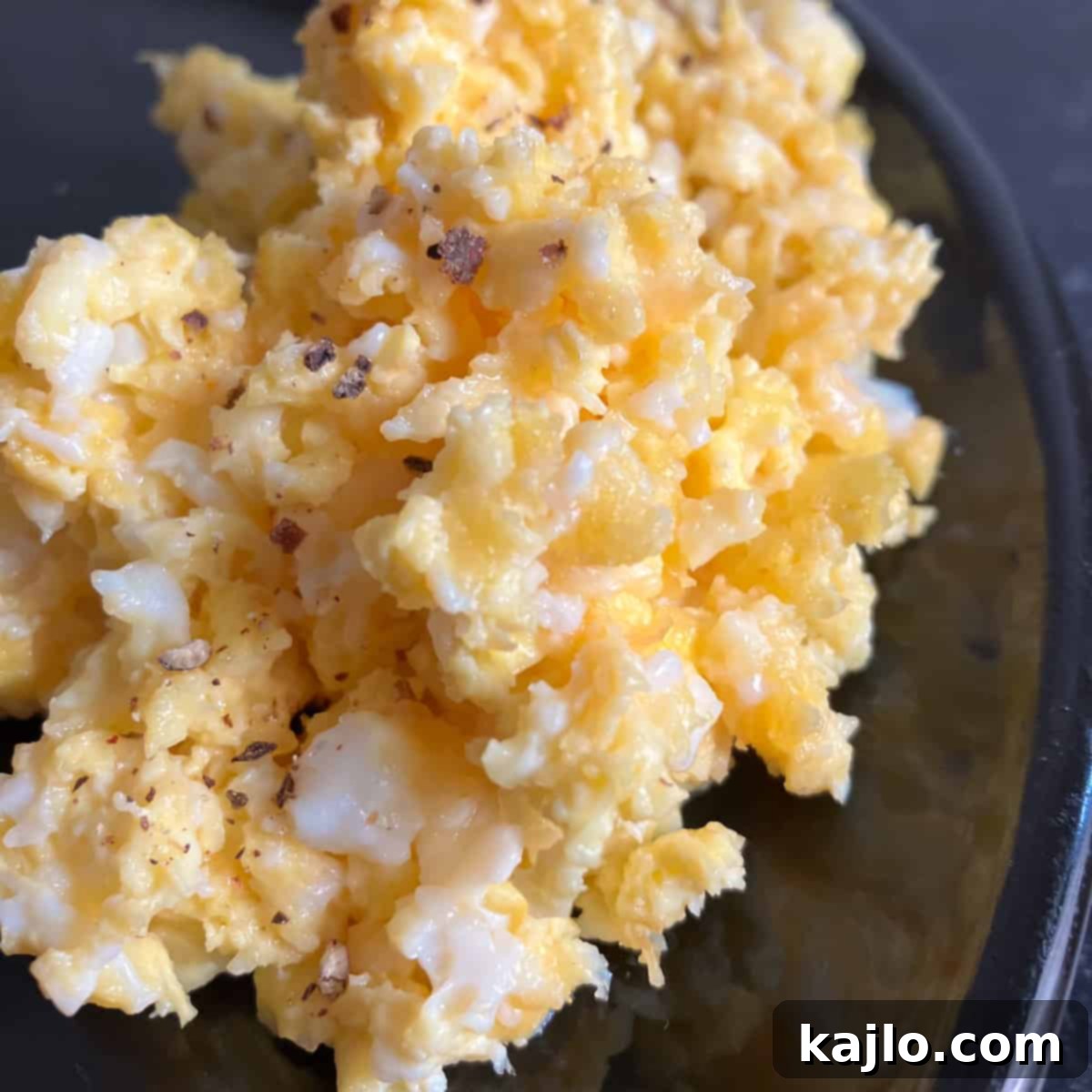
Air Fryer Quail Eggs: A Modern Approach
The air fryer is a fantastic tool for cooking quail eggs, offering a hands-off approach and excellent results for various preparations. Its circulating hot air cooks them quickly and evenly, whether you want them fried, hard-boiled, or scrambled.
Air Fryer Fried Quail Egg:
For a unique twist on fried eggs, spray a mini muffin tin generously with cooking spray. Crack one quail egg into each compartment of the tin. Place the tin in your air fryer basket and air fry for 3-5 minutes at 375°F (190°C), or until the egg whites are fully set. If you’re using an air fryer oven, position the muffin tin on the top rack for best results. This method yields perfectly portioned, crispy-edged fried quail eggs.
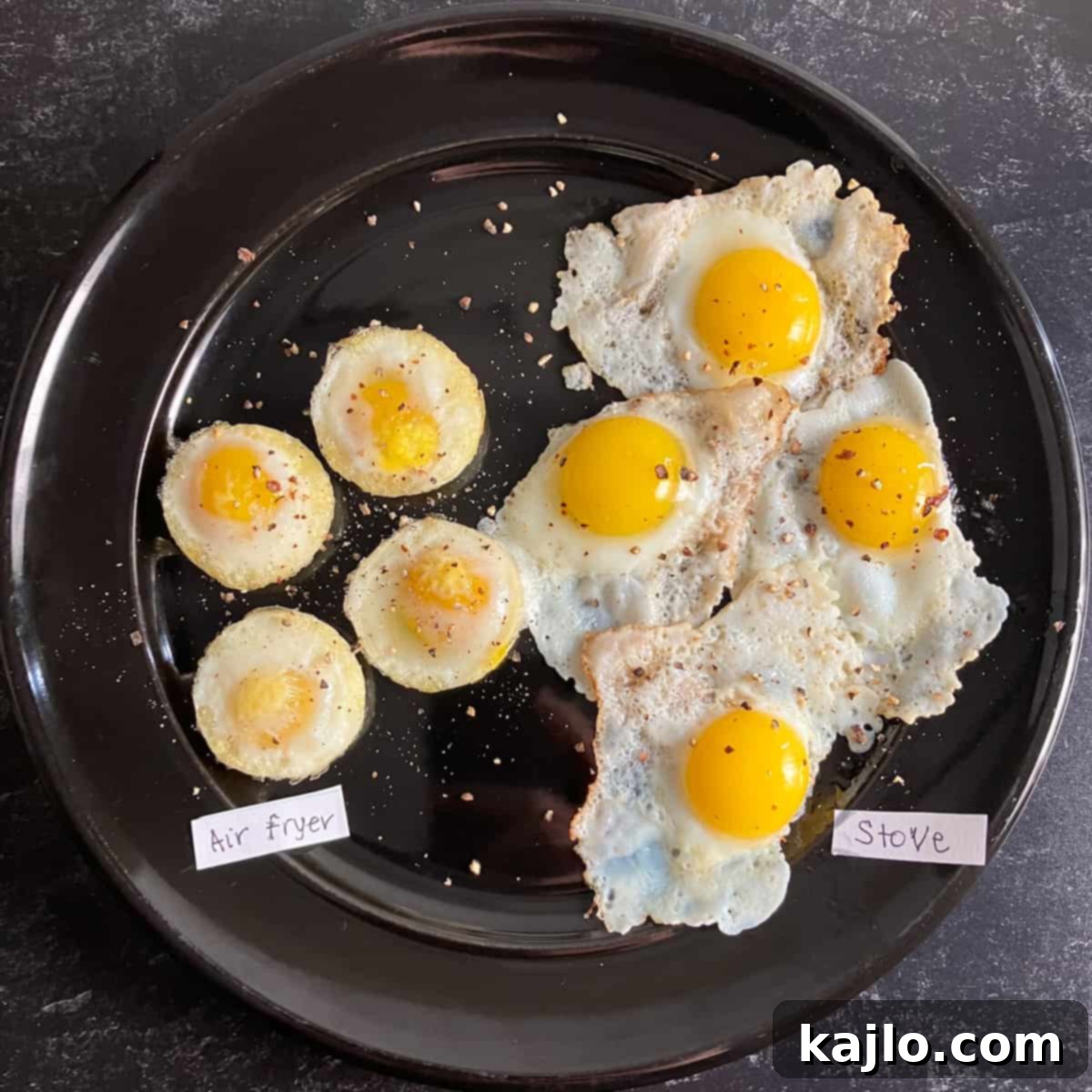
Air Fryer Hard-Boiled Quail Egg:
This is arguably one of the easiest ways to get perfectly hard-boiled quail eggs for breakfast or snacks. Simply place your quail eggs directly into the air fryer basket—no water needed! Air fry them for 5-6 minutes at 270°F (132°C). As soon as they’re done, immediately plunge the hot quail eggs into a bowl of ice water. This sudden temperature change stops the cooking process and makes peeling significantly easier, resulting in consistently firm yolks and whites.
Air Fryer Scrambled Quail Eggs:
For a convenient scrambled egg option, mist a mini pie tin or a small, oven-safe dish with cooking spray. In a separate bowl, whisk 4 quail eggs together until well combined. Pour the whisked eggs into the prepared tin. Air fry for 3 minutes at 375°F (190°C). Remove the tin, whisk the eggs briefly to break up any large curds, and then return them to the air fryer for another 1-2 minutes, or until cooked through. Whisk or mash again for your desired scrambled egg texture.
Psst… If you enjoyed learning how to cook a quail egg in the air fryer, you may also enjoy our air fryer eggs recipe for a quick and easy breakfast!
Join our community! Subscribe for all of the latest and greatest recipes, and follow us on Facebook, Pinterest, Instagram, and YouTube!
